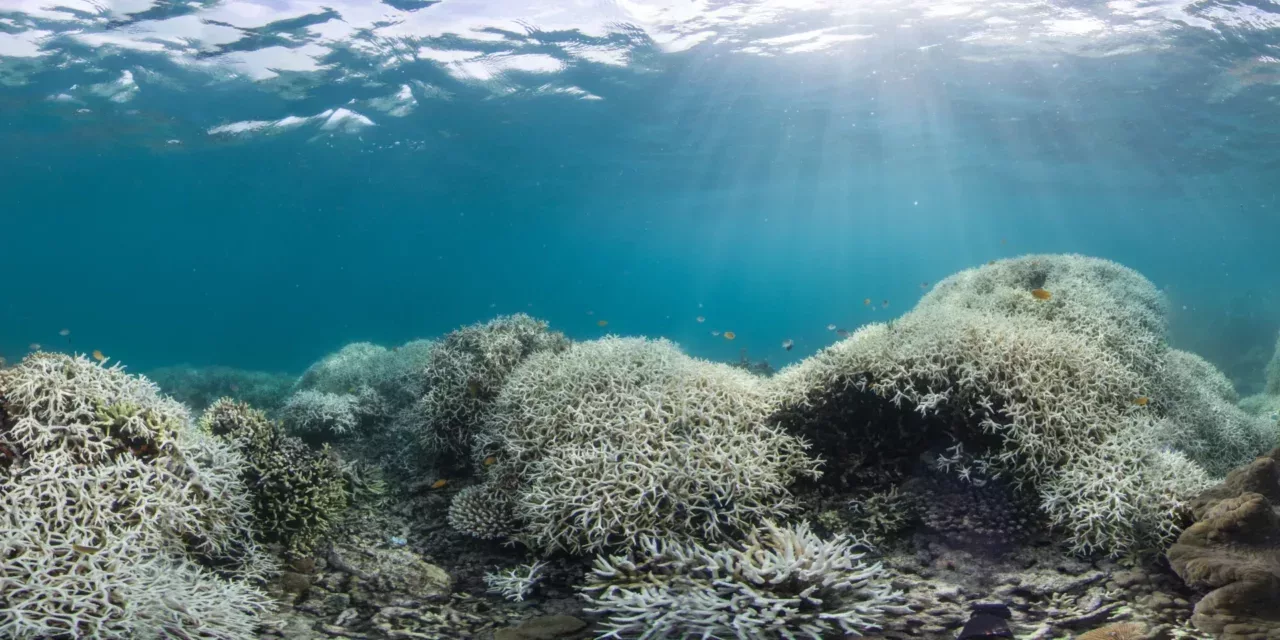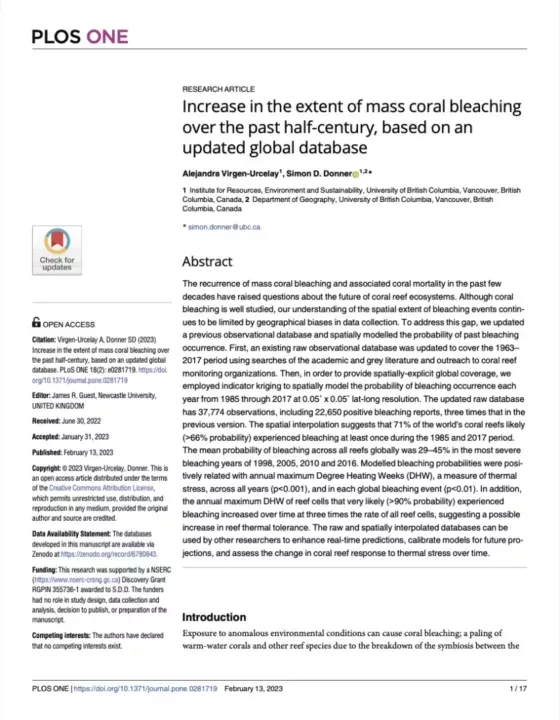A new study based on an updated global database indicates an increase in the extent of mass coral bleaching over the past half-century.
The study aimed to address a gap in the data on the spatial extent of bleaching events by using a database of previous observational data (i.e. record of bleaching events) and spatially modelling the probability of past bleaching occurrence (i.e. whether bleaching probably happened in a set location), for the 1963–2017 period.
The observational data consisted of a mix of academic and grey literature and outreach to coral reef monitoring organizations, and then the researchers used indicator kriging to spatially model the probability of bleaching occurrence each year. This allowed for the production of global annual maps of bleaching probability each year.
Key findings:
- The extent of bleaching has increased over time with a drastic increase in 2014–2017
- 71% of the world’s coral reefs likely experienced bleaching at least once between 1985 and 2017
- There is a correlation between the probability of bleaching and thermal stress, suggesting that climate change is the driver behind bleaching
Why do these findings matter?
The spatial interpolation method used can potentially help identify errors or inconsistencies in previous observational data and improve real-time predictions. The databases of the observational and interpolated data can also be used for future projections and assessing the change in coral reef response to thermal stress over time.
Both the study and datasets are freely available and can be used for future research.



